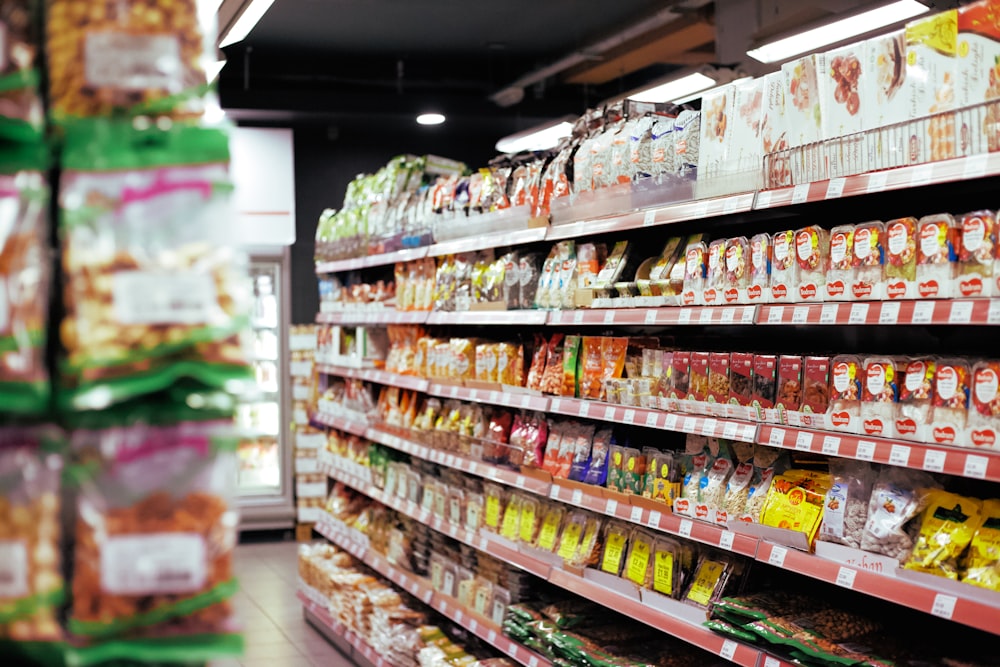After a long day of work, we’re all guilty of throwing frozen foods into the microwave for a quick fix. Although frozen foods are quick, and affordable, a tiny part of us just knows that it certainly isn’t the healthiest dinner choice. However, what is wrong with eating frozen foods? Why are they bad for us?

Frozen foods may increase blood pressure?
The US Food and Drug Administration defines processed foods as “any food other than a raw agricultural commodity and includes any raw agricultural commodity that has been subject to processing, such as canning, cooking, freezing, dehydration, or milling.” This defines nearly all food served in restaurants and grocery store products as processed. Food processing process involves the addition of sodium containing additives, hence increasing the sodium level in food products.
This is an issue as according to the CDC, up to 70% of sodium Americans consume comes from processed and restaurant foods. Consuming too much sodium can increase blood pressure, hence increasing the risk of stroke and heart disease. 2015-2020 Dietary Guidelines for Americans recommend Americans to consume less than 2300 milligrams of sodium each day. But here’s a more important question: How do we cut down sodium in our food?
- Similar products may vary in sodium content, hence, compare food labels and opt for foods with the least amount of sodium.
- Use fresh ingredients instead of processed ones
- Request for lower sodium options when dining out
- Reduce portion sizes can limit salt consumption
Frozen food may clog arteries
In processed / frozen food, trans fat is known as “partially hydrogenated oils” on ingredient labels which is notorious for clogging arteries and increasing the risk of heart diseases, stroke, and developing type 2 diabetes. Trans fats raises bad (LDL) cholesterol, while lowering the good (HDL) cholesterol levels. Trans fat is created in an industrial process that adds hydrogen to liquid vegetable oils to make them more solid, according to Heart Organization.
Why do companies use trans fats? Besides being inexpensive and giving food a desirable taste and texture, trans fats can be reused a number of times. However, its undesirable health effects have trumped its usefulness, leading countries such as Denmark, Switzerland, Canada, and several jurisdictions of the US to restrict or reduce the use of trans fats in food service establishments. In November 2013, the FDA determined that partially hydrogenated oils are no longer Generally Recognized as Safe (GRAS) in human food.
Unknown chemicals in frozen foods
A report from Environmental Working Group estimated that up to 2,000 synthetic chemicals can be found in conventional packaged foods. Furthermore, the chemicals may not be approved by the FDA but as it is approved by industry group, the Flavor and Extract Manufacturers Association, it is used in products while not being required to be labeled on the package. This is disturbing as these added chemical preservatives may cause long term effects such as increase the risks of diseases ranging from hormonal problems to cancer.
The EWG has conducted their research and summarized some common synthethic preservatives found in packaged foods:
| Synthetic Preservatives | Concerns |
| Butylated Hydroxyanisole (BHA) | Listed by the state of California as a carcinogen and classified as a potential endocrine disruptor by the European Union. |
| Sodium Nitrate | Determined by the World Health Organization to be probably carcinogenic to humans. |
| Sodium Benzoate | World Health Organization reports hematologic effects in laboratory studies |
| t-Butylhydroquinone | World Health Organization reports hematologic effects in laboratory studies. |
| Diacetyltartaric and Fatty Acid Esters of Glycero | World Health Organization reports inflammation of the heart in laboratory studies. |
| Propylene Glycol | World Health Organization and the U.S. Department of Health and Human Services report blood effects in laboratory studies. |
| Butylated Hydroxytoluene (BHT) | Causes lung and liver tumors in studies of laboratory animals. |
| Disodium Inosinate | World Health Organization and the U.S. Food and Drug Administration have determined can increase uric acid levels, increasing the risk of kidney stones or gout. |
| Disodium Guanylate | World Health Organization determined can increase uric acid levels, increasing the risk for kidney stones or gout. |
| Polysorbate 80 | Environmental Protection Agency reports potential to be an endocrine disruptor in studies of cells. Disrupts gut microbiota in laboratory studies. |
| Polyoxyethylene Sorbitan Monostearate | Affects reproduction and lactation in laboratory studies. |
| Natamycin | World Health Organization reports gastrointestinal effects. |
Try to reduce the consumption of frozen foods as there are too many synthetic chemicals that may cause long term health problems. Furthermore, trans fat and sodium contained in frozen foods may increase the risk of one developing heart diseases, strokes and other complications. Instead, try to use natural and organic foods as all synthetic chemical compounds has to be stringently approved by the FDA. If you really suffer a lack of time, try to ask your server for dishes with the least amount of sodium when dining out, and to check nutrition labels carefully before purchasing frozen foods.
References:
“Get the Facts: Sodium’s Role in Processed Food – CDC.” https://www.cdc.gov/salt/pdfs/sodium_role_processed.pdf. Accessed 29 Dec. 2020.
“Dangerous Side Effects of Eating Frozen Foods, According to ….” 26 Dec. 2020, https://www.eatthis.com/news-side-effects-eating-frozen-foods-experts/. Accessed 29 Dec. 2020.
“Organic: The Original Clean Food – EWG.” 5 Mar. 2019, https://www.ewg.org/research/packagedorganic/. Accessed 29 Dec. 2020.
“Trans Fats | American Heart Association.” https://www.heart.org/en/healthy-living/healthy-eating/eat-smart/fats/trans-fat. Accessed 29 Dec. 2020.






